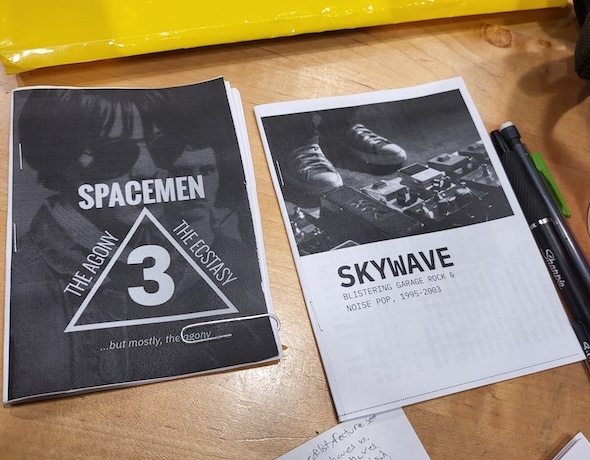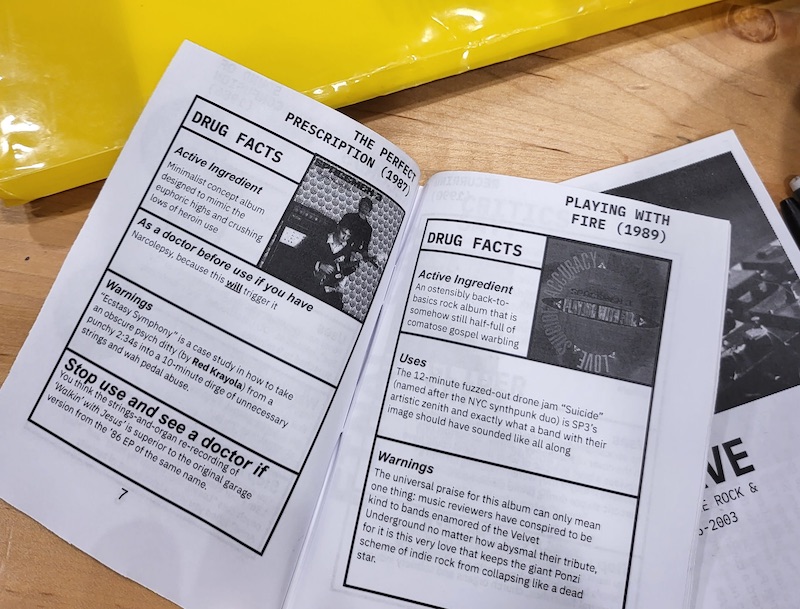I spent the past weekend (and a few weeknight evenings prior) cutting and printing some zines at home. It wasn't particularly complicated, but spending those hours doing it led to me coming up with some thoughts I wanted to jot down.
Although I'm already on Issue #3 of the GLIDER fanzine, I found the process of home-printing paper zines to be qualitatively pretty different. Issues of GLIDER are professionally printed in 50-unit runs at a local print shop. It features 'perfect binding', which is the name given to books where the pages are glued to the spine. In most respects, working on Glider feels like writing a book. The experience is primarily digital, and while I design the cover and interiors, I don't actually know what it will look and feel like in my hands until I crack open the shipping box.
That wasn't the case with paper zines, where you are working with the tactile experience of folding and cutting paper as soon as the sheet of paper pops out of the printer. Talk about rapid prototyping! Here's what I ended the weekend with:


The Spacemen 3 zine is a standalone version of the zine I designed for inclusion in the 2nd issue of GLIDER. As I was more interested in learning the mechanics of folding and cutting, I chose to populate the zine with pre-existing material. The 2nd zine is a restrospective of the noise pop band Skywave, compiling reviews of their 4 best records, which I had previously written for my website.
Deceptively small, surprisingly content-dense
Most zines are made by folding sheets of paper and stapling them together. You can fit a surprising amount of content into 2 sheets paper printing double-sided. Based on my estimates, 1200-1500 words should easily be possible on a 16-page zine, which is made with 2 sheets of paper.
The right fit for short, self-contained stories
Zines are a good fit for standalone content. We all have domains of expertise on obscure topics that nobody else shares. Zines can be a good outlet for compartmentalizing some of that information. I say 'some' because zines are supposed to be short and punchy, so focusing on the highlights is key. Which brings me to my next point...
A Stone Age PowerPoint
Making these felt a LOT like making Powerpoints in school. I'm not complaining, I've always thought that Powerpoints were an excellent example of content because it forced people to be succinct and focus on the really interesting stuff; not that everyone followed those guidelines, but they at least understood that brevity was the point, and that the audience could drill down to the details afterwards should they need to.
A physical artifact that's unique in its visibility
I've written a lot of reviews, blog posts and online comments in my lifetime, and 99.9% of them exist in the ether, sitting on websites I that I no longer visit, or on comment threads on ancient posts that are no longer visited. Heck, even this Spacemen 3 zine originally appeared on my Instagram account in 2020, and I'd mostly forgotten about it.
Printing it out felt a bit childish at points, almost like I was working on a school project. In my defense, I can't remember a time I was cutting paper and stapling things together for something that wasn't a school project. It wasn't painless by any means. It took a bit of work to track down a set of printable zine templates that would work with Affinity Publisher. I also had to buy a paper trimmer from a crafts store, and just like the online reviews said, it requires an unreaasonable level of focus to cut the paper in straight lines.
But once it was all done, I felt a calming sense of completion. I'm writing this blog post as a way of documenting what I learned, and then metaphorically 'closing the loop' on this topic and moving on to another project of interest.
Until next time!